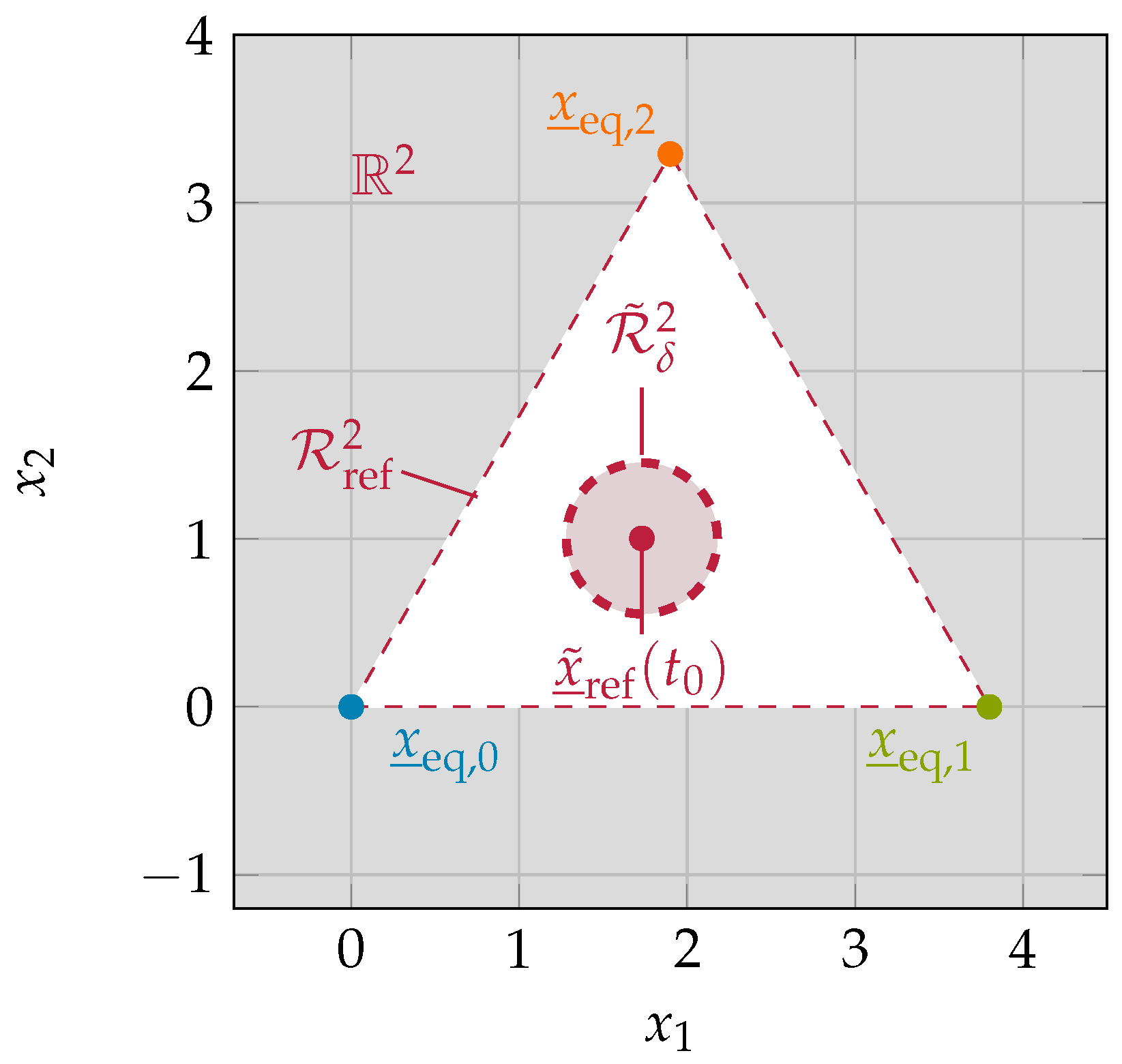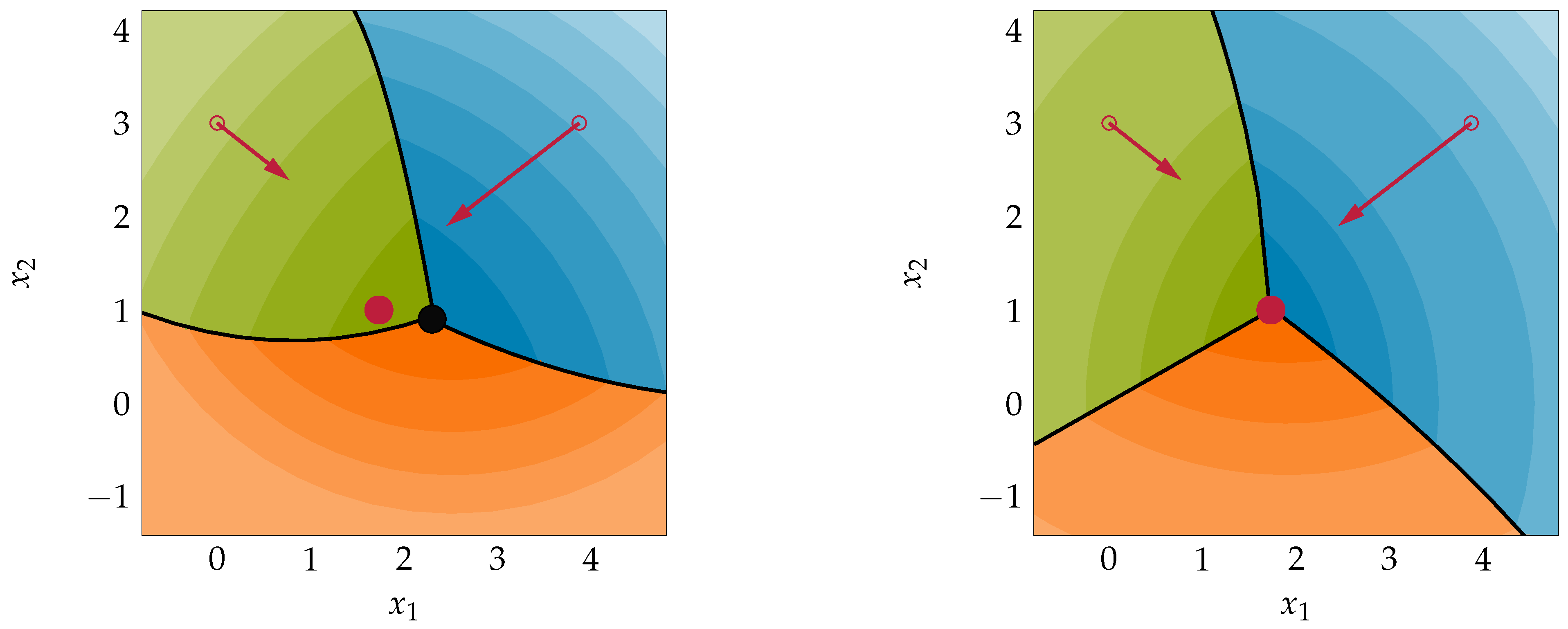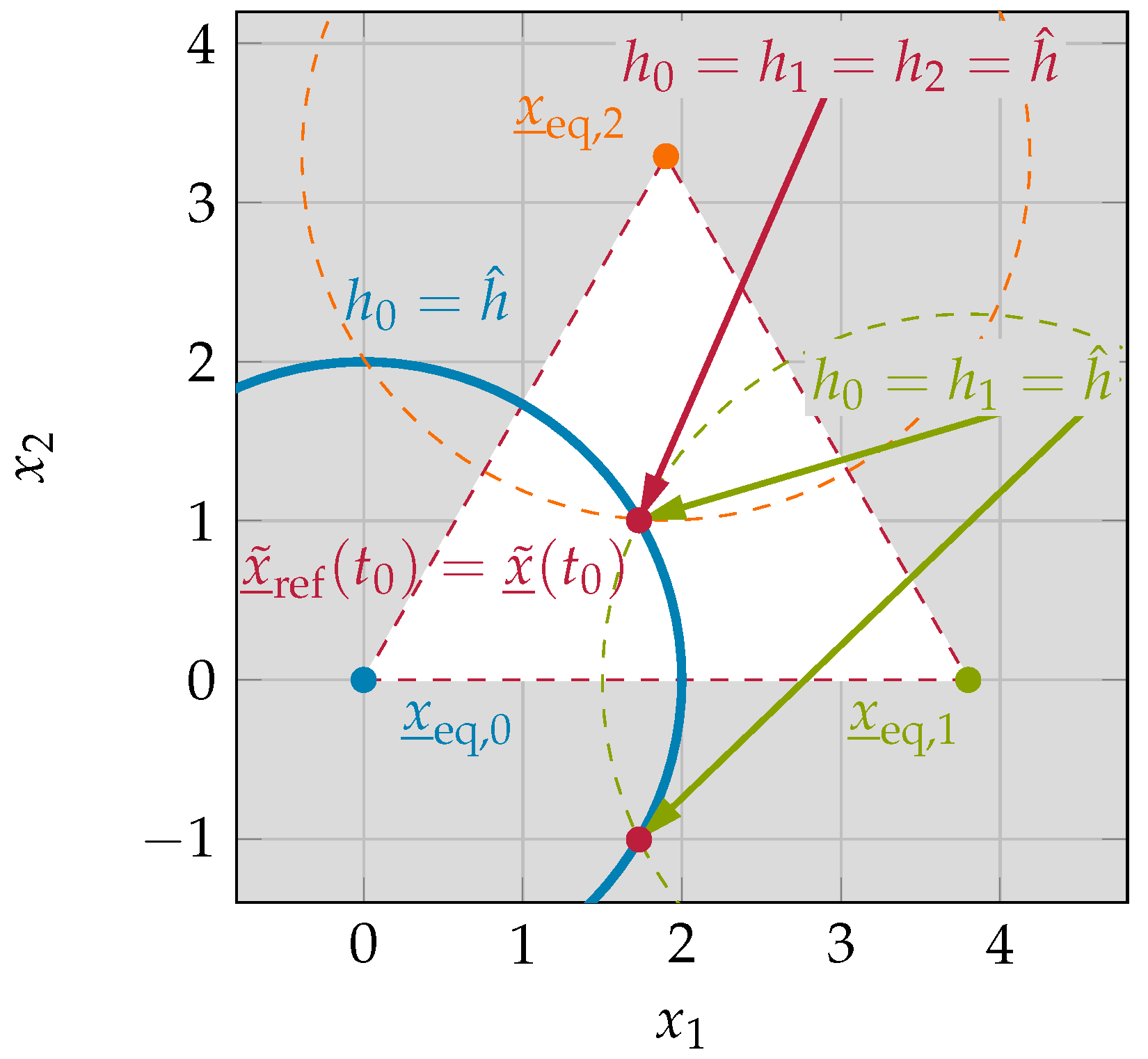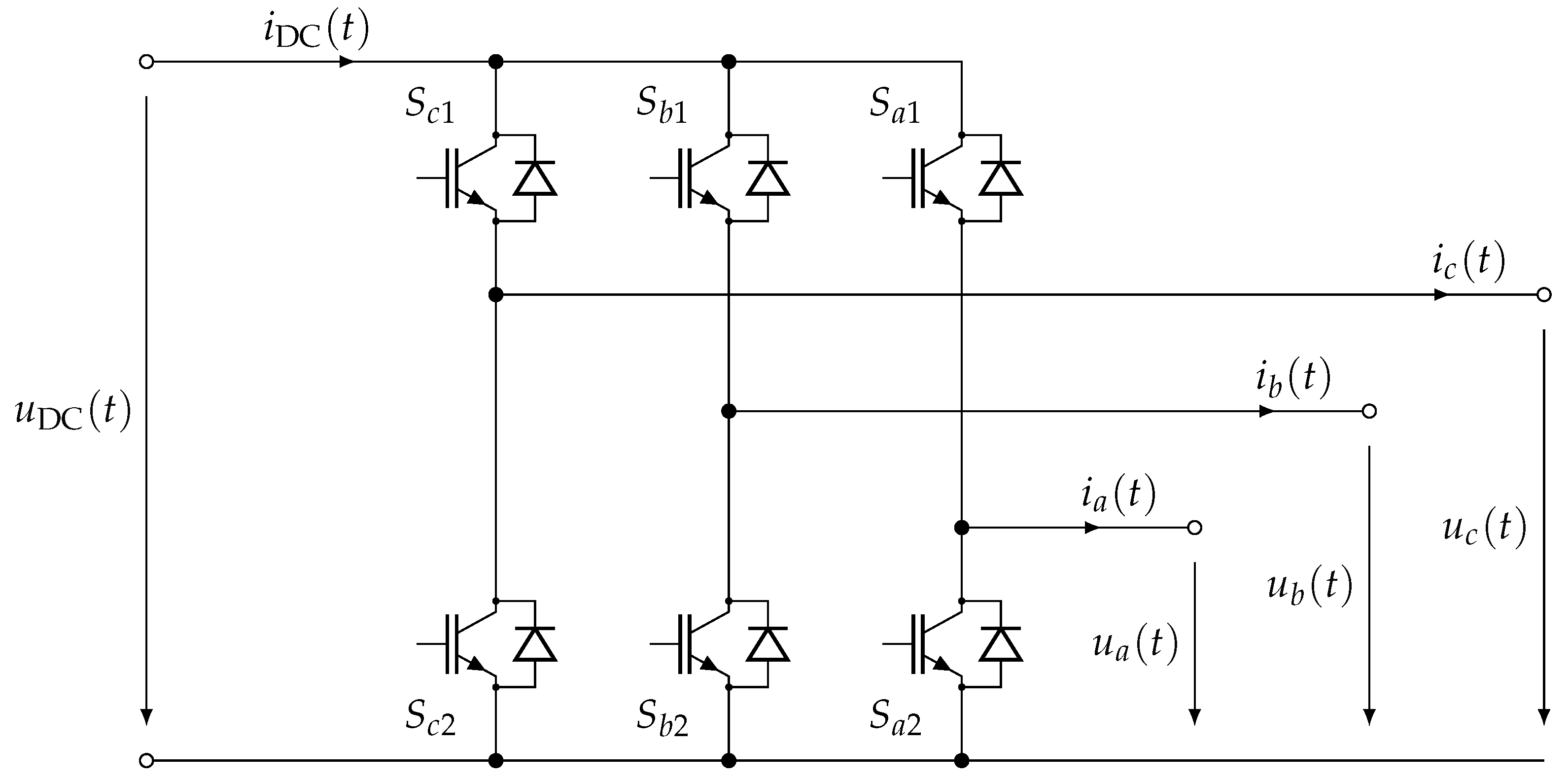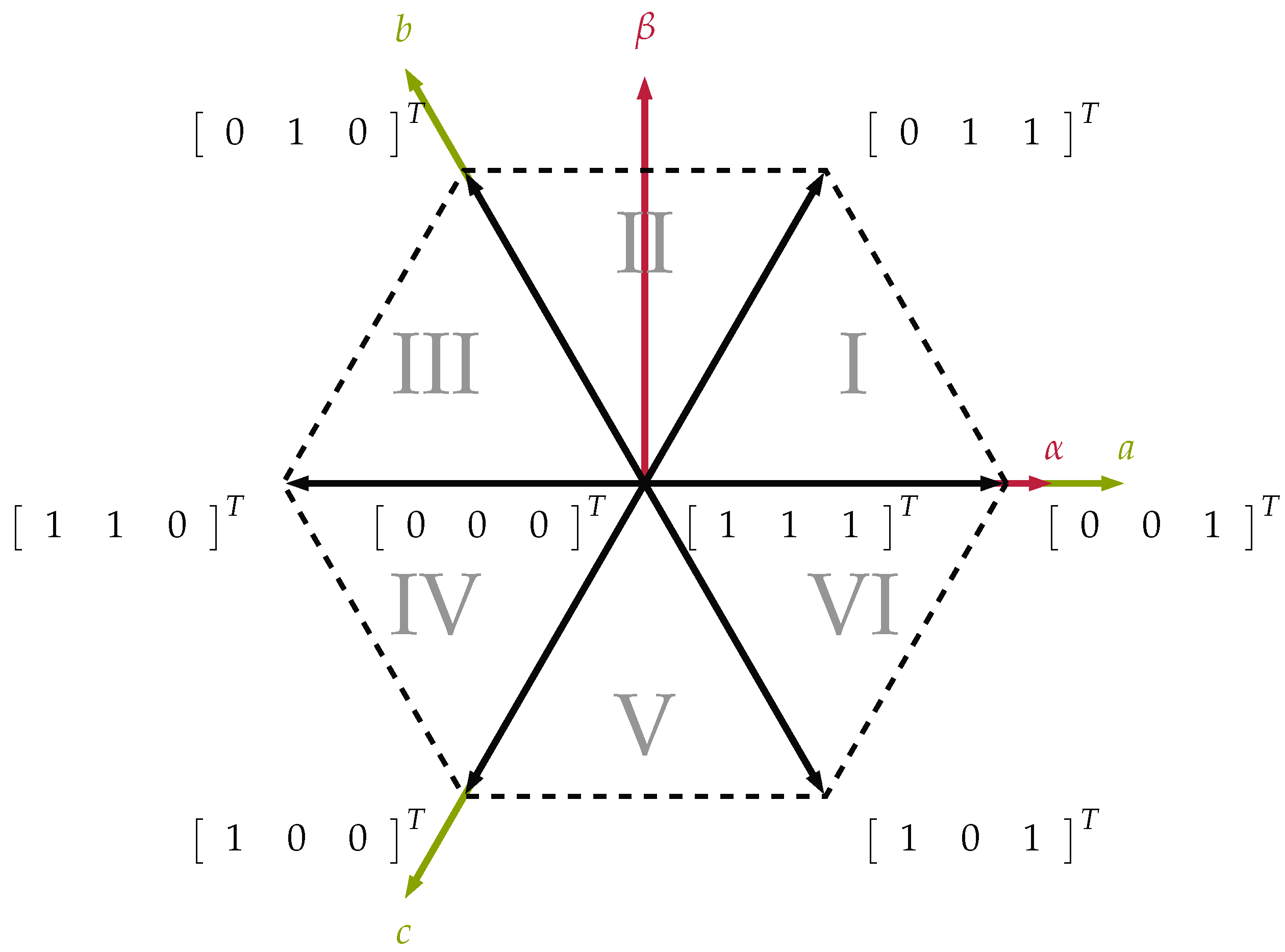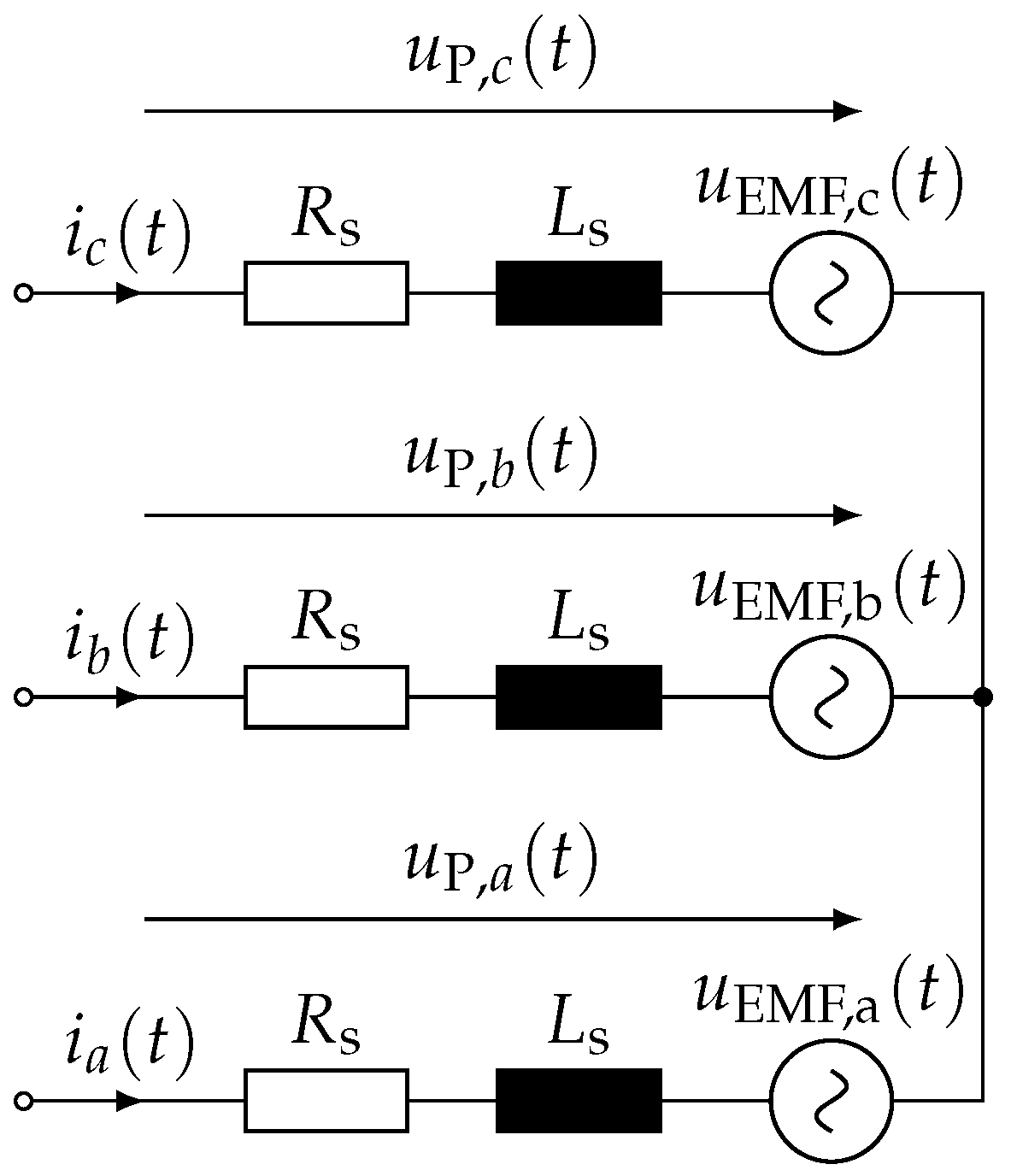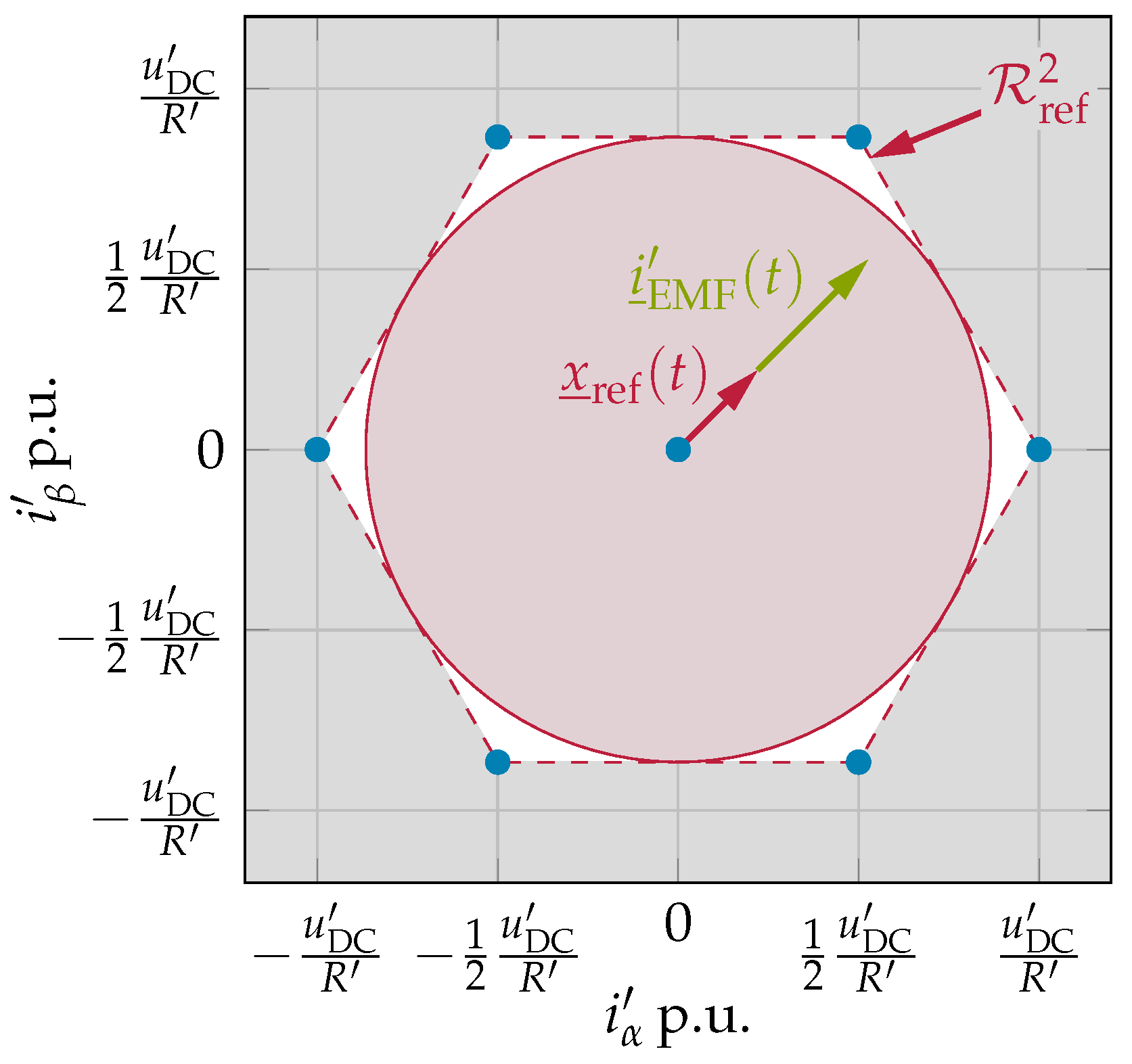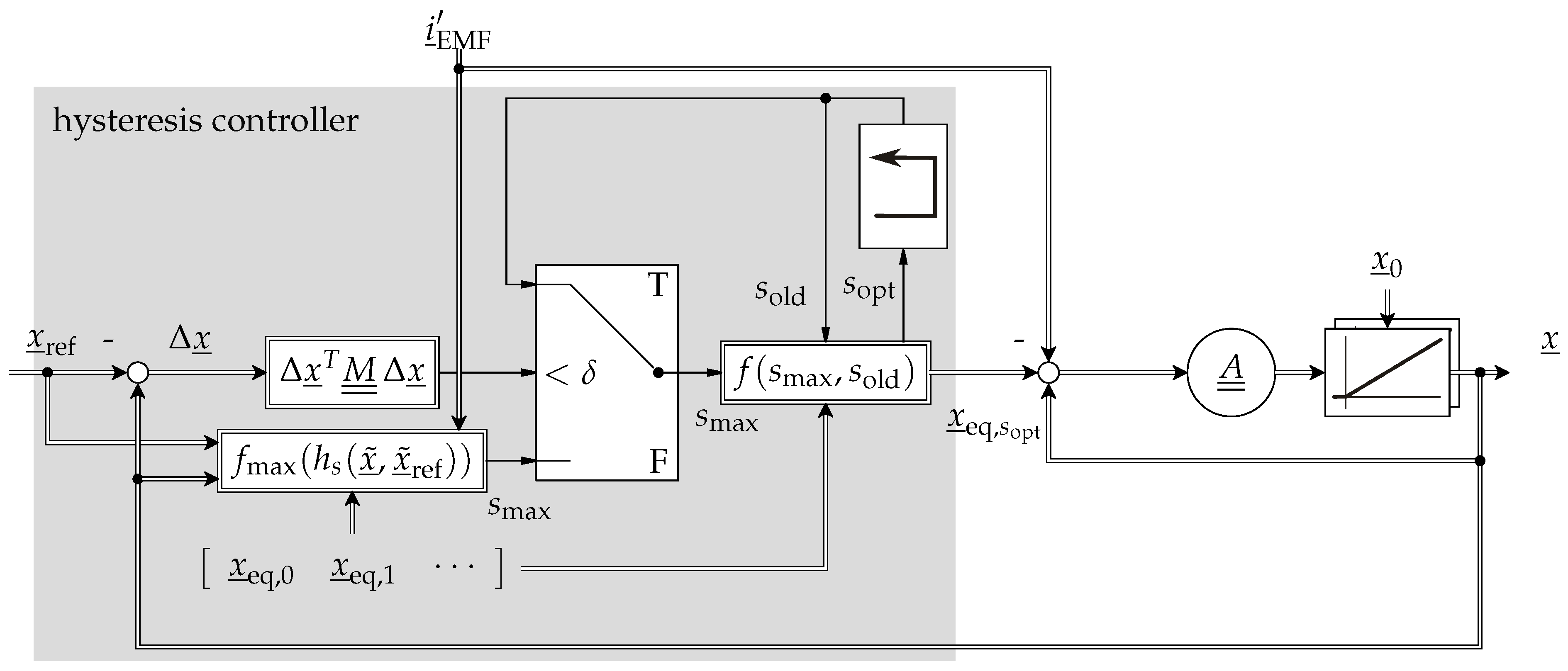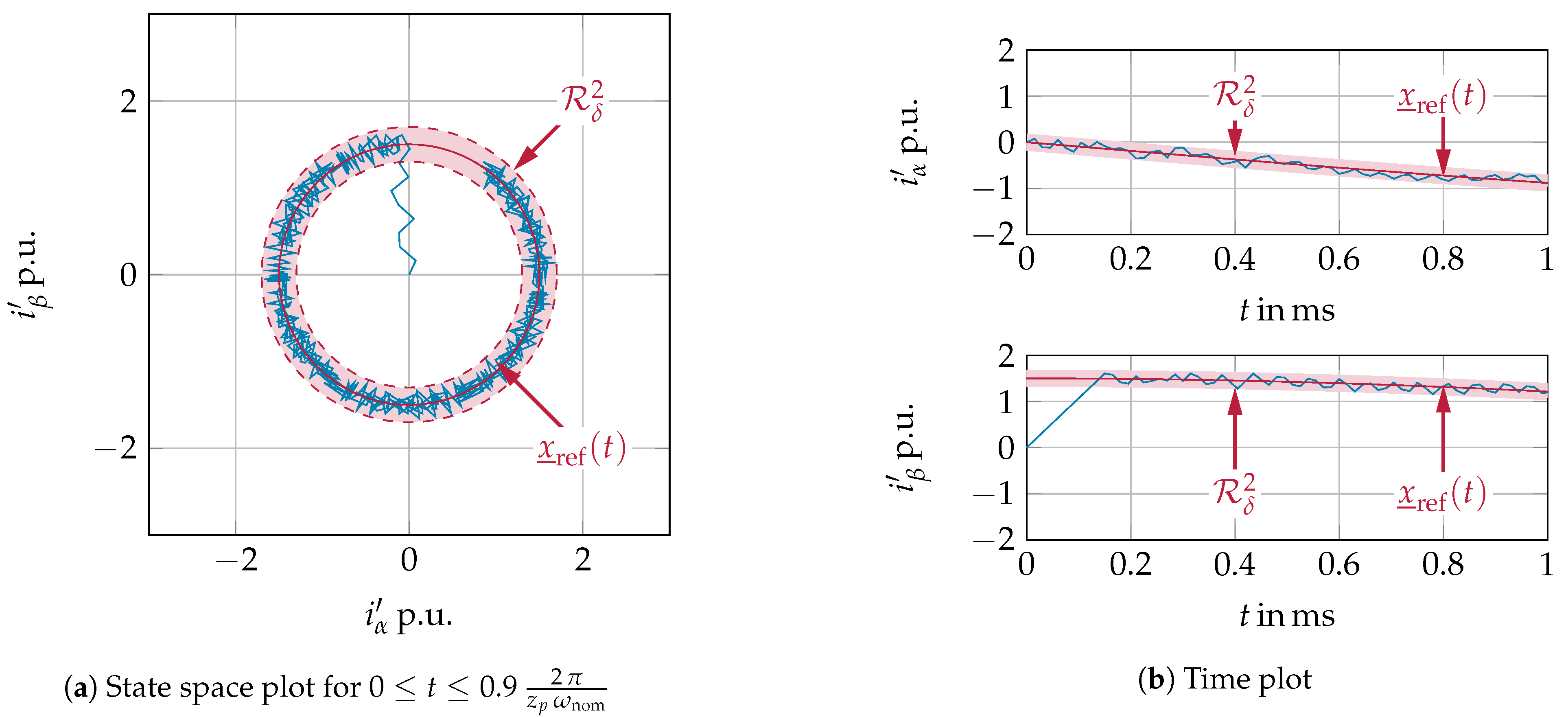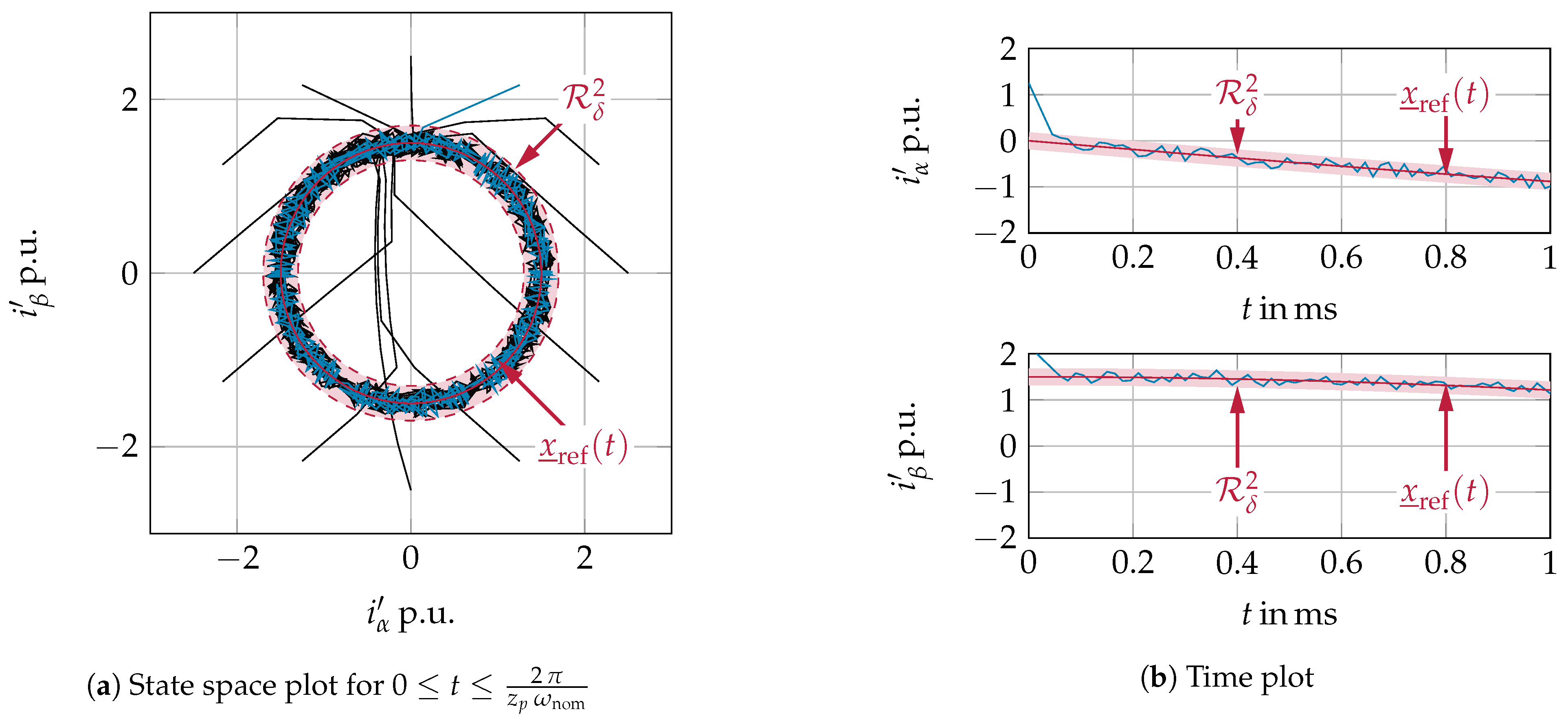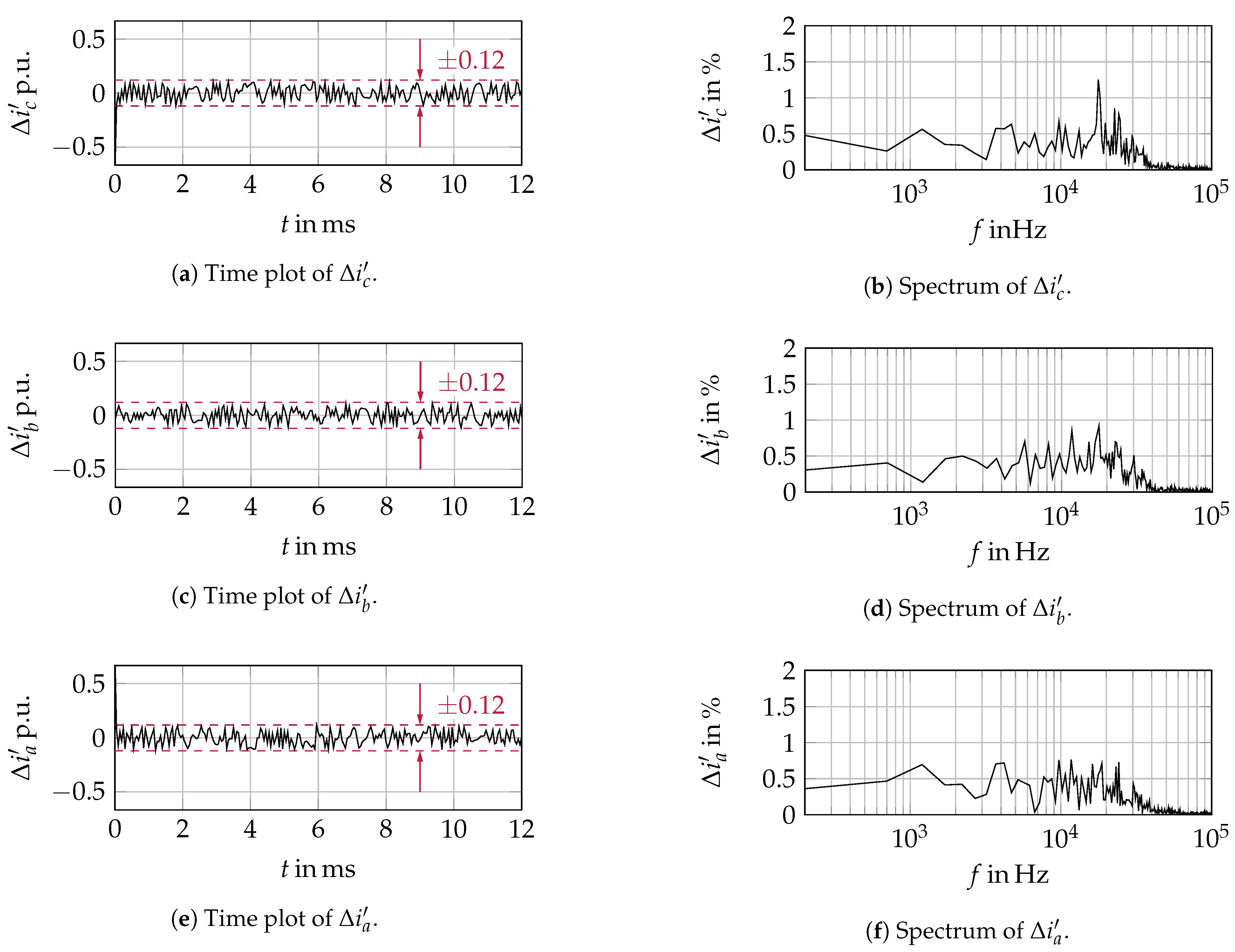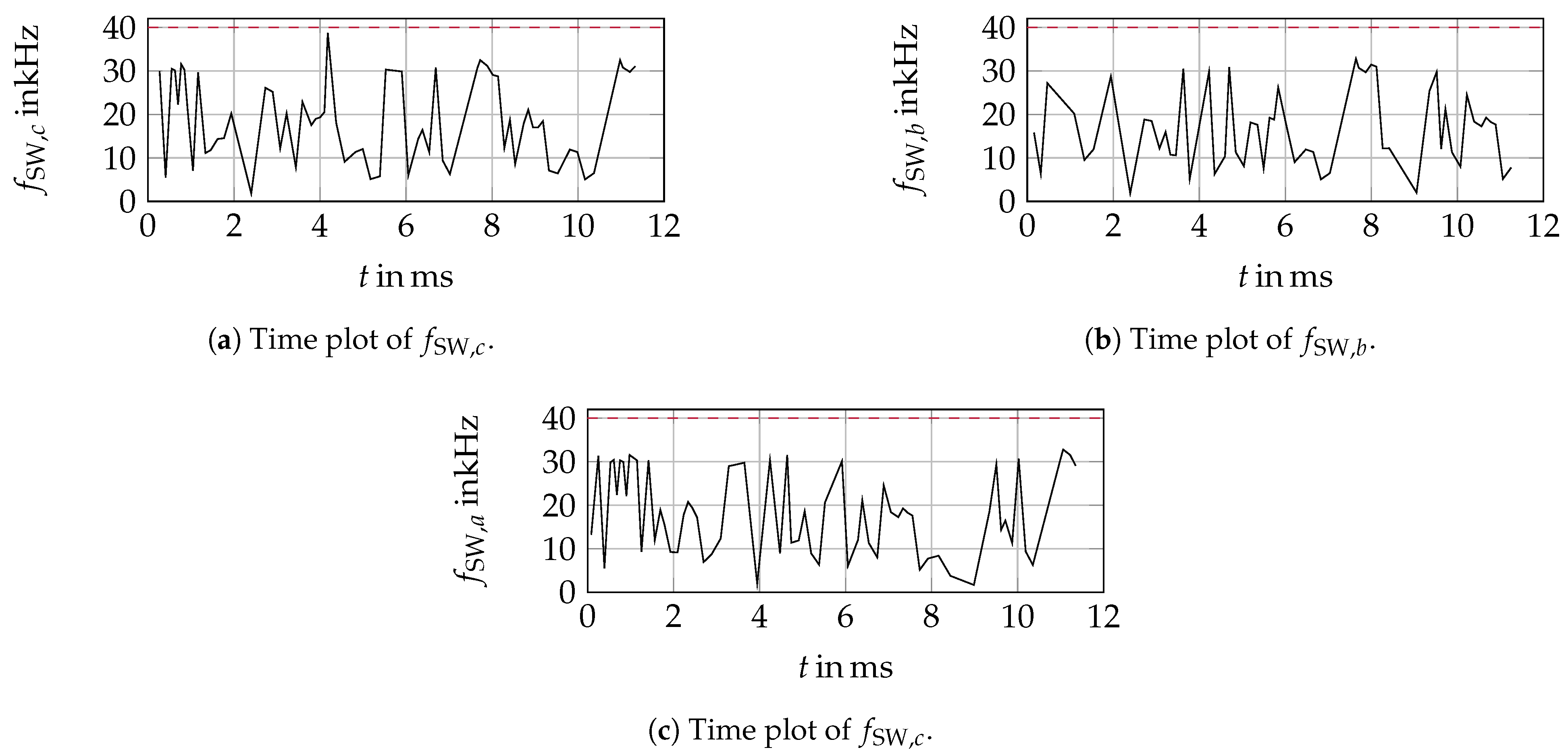2.1. General System Description of Switched Systems
In general, a switched system is described by
where
and
are the state space and input vector, respectively. The function
represents a piece-wise defined switching sequence with values specified by the set of all different subsystems
. The time when
changes its value is named switching time or switching event.
The dynamic behavior of a switched system is determined, on the one hand, by the dynamics of the individual subsystems and, on the other hand, by the sequence of switching among these subsystems. There are many well-known methods to analyze the stability in the sense of Lyapunov of each subsystem [
14,
15,
16,
17,
19]. However, even if all subsystems have the same stable equilibrium, it may be an unstable equilibrium of the switched system; see
Figure 1. Moreover, on the contrary, a switched system might have a stable equilibrium, even if it is an unstable equilibrium for some or all subsystems; see
Figure 2. In both cases, the switching sequence is responsible for the stability of the equilibrium.
The Lyapunov stability of switched systems was already discussed in literature and is a proven tool for stability analysis [
14,
15,
16,
17]. However, all methods require that the equilibria to be analyzed are in the origin, which forces the designer to perform a state transformation in advance. This process is usually even more difficult in practice, as it is often not desired to guarantee the convergence of the system trajectory
to a constant equilibrium point, but rather to a subspace around a time-varying reference trajectory
. For example, this is also the case in converter applications.
In the following, this convergence is analyzed for linear switched systems of the form
with unique stable equilibria
for all
. If, as in the case of switching converters, the plant’s input is known in advance, both the state trajectory
and the reference trajectory
can be shifted by
, i.e.,
Since both
and
are shifted by
, the convergence of
to a subspace
around
deduces the convergence of
to an equivalent subspace around
. The subspace
is bounded by the hysteresis threshold
for the weighted distance between
and
and is defined by
where the weighting matrix
is positive definite. In summary, it can be supposed that there exists a switching control law that guarantees the convergence of the shifted state trajectory
to
, if:
The state trajectory
of the switched system in (
2) converges to a unique stable equilibrium
for each
if subsystem
s is active and
.
The input is continuous and given in advance;
The shifted reference trajectory , where is specified by the vector space, spanned by the subsystem equilibria for all ;
The slowest mode of the system trajectory is faster than the fastest mode of the reference trajectory .
To illustrate condition three,
Figure 3 shows the equilibria of an exemplary switched system in
with three subsystems,
, a shifted reference trajectory
, and the corresponding sets
for some
.
In [
19], a switching sequence
is proposed, which guarantees the convergence of
to a time invariant reference point, in case of time invariant solutions
. This approach is extended in the following section to define a switching sequence, which guarantees the convergence of
to a subspace
around a time-varying reference trajectory
. The following definitions are utilized in this paper for simplification:
2.2. Proposed Switching Control Law
Throughout the remaining paper, it is supposed that the input
of the switched system in (
2) is predefined in advance, e.g., by a limited set of voltage vectors. Using (
3) and (
4), the subsystems can be represented as
with unique equilibria
. A quadratic function
with the weighting matrix
from (
5), is assigned to each subsystem. These functions do not necessarily have to be Lyapunov functions, i.e.,
is not required. In this paper it is shown that convergence is also given with
for certain systems and reference trajectories.
Then, it is proposed to extend the switching sequence
from [
19] and define a new stabilizing control law of the form
where
denotes the time when
enters
. The so-called quality functions
are chosen in such a way that
converges to
in finite time. Convergence is achieved by fulfilling the following conditions for all
and all
where
is some constant, and
2.3. Selection of the Quality Functions
With regard to the Lyapunov theory [
20,
21,
22], it is suggested to specify the quality functions as
In this context, the choice of the time-varying, positive definite matrices
for all
represents a degree of freedom, allowing to ensure the convergence of
into the set
and thus the convergence of
into the set
.
Figure 4 illustrates the exemplary quality functions
for the above example system and some
, where the matrices
were chosen in a way that
for all
with
and
, which is marked as red dot in
Figure 4. Consequently, all conditions in (
11), (
12), (
13), and (
14) are fulfilled.
It can be imagined that the choice of each
is crucial for convergence. For instance,
Figure 5 exemplifies an unfavorable and a well-designed parameterization. In both
Figure 4 and
Figure 5, the color gradient reflects the value of
, with lighter colors representing larger values.
If the switching sequence is created by (
10), subsystem 0 or 1 is activated depending on the initial value
, marked as circles in
Figure 5. As a decrease in
is enforced by (
14), when subsystem
s is active, the shifted state trajectory
moves in the direction of the arrows until another
exceeds the value of the quality function of the currently active subsystem, marked as black lines in
Figure 5. From this point on, the shifted state trajectory
moves along this intersection line in the direction of decreasing
, and the system only switches between the subsystems whose quality functions
coincide. The switching behavior along the intersection line is similar to that of a system in sliding mode. Sliding along the intersection line is interrupted only by reaching another intersection line. In
Figure 5, this corresponds to the point were all
are equal. At this point, the system switches between all subsystems, and the state trajectory remains in an area around this point. The size of the area represents a design parameter and depends on the maximum allowed switching frequency and the dynamics of the subsystems. In
Figure 5a, the unfavorable parameterization of
leads to an intersection point unequal to
. Only if condition (13) is satisfied, i.e., all matrices
are chosen, such that all
intersect in
, the convergence to
is given; see
Figure 5b. The value
of the quality functions at the intersection point is not important for convergence and is related to the choice of each individual
. In this publication, it is proposed to define
by
with the weighting matrix
from (
5). As
per definition (see (
6) and (
7)), the time-varying matrices
are positive definite and
fulfills the conditions (
11) and (
12). With this choice of
, the quality functions
become the ratio of the weighted distance between
and
and
, respectively, which are all equal if
.
If a switched system with only one subsystem is considered, the condition
is given for an infinite number of combinations of
and
. More precisely, the condition is fulfilled as long as
and
are on the same orbit around
, illustrated as blue curve around
in
Figure 6 for some
.
Introducing a second subsystem, the set of solutions reduces to two possible equilibria, specified by the two intersections of the orbits around the two system equilibria
and
, marked as red dots in
Figure 6. Finally, again considering the exemplary system with three subsystems shown in
Figure 4 or
Figure 5b, the quality functions
are all equal to
only at
, i.e.,
. Hence, defining the matrices
as suggested in (
16), condition (13) is also satisfied for all
.
Taking a closer look at
, where all
are specified by (
16) and defining
the quality function becomes
Applying the quotient rule, the time derivative of the quality functions follows
Thus, condition (
14) is fulfilled as long as the inequality
holds. It can be noticed that both quotients in (
20) are a measure for the convergence to the subsystem equlibria
. When
is a candidate Lyapunov function and a constant reference point
as well as constant input
are given, (
20) simplifies to the classical Lyapunov stability criterion, where the time derivative of
must satisfy
.


